Panel
In a world in which we increasingly rely on online content, media art archives and platforms are no exception. The Networked Archives panel addresses their role in making media art accessible online and highlights various approaches to the field. As archives and metadata are central issues and the base for the digital content sector they are evolving into important online value chains. How can archives be monetized, contribute to the developments in the media art markets, and form a base for online platforms? Following short presentations of the panelists’ current projects and thoughts on the topic, these questions about accessibility and attractivity, added values, and joint efforts needed will be discussed.
Speakers: Oliver Grau (DE), Dagmar Schink (AT), Christiane Paul (DE/US), Mariano Sardón (AR), Rafael Lozano-Hemmer (MX/CA).
Moderation: Manuela Naveau (AT)
Before the panel, a talk will be given by Rafael Lozano-Hemmer, who will reflect on the role of the artist in the process of archiving media art and later join in on the debate.
Video
Project Credits / Acknowledgements
This conference is supported by the Federal Ministry for Arts, Culture, the Civil Service and Sport.
Biographies
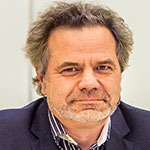
Oliver Grau (DE)
Oliver Grau is first Chair Professor for Image Science in the German-speaking countries at the Danube University since 2005 and has held more than 350 lectures and keynotes. Grau’s “Virtual Art,” (2003) is the most quoted art history monograph since 2000. He conceived scientific tools for digital humanities like the Archive for Digital Art (ADA, since 1999) and developed international MA programs like Image Science and the joint master in MediaArtsCultures. Grau was founding director of the MediaArtHistories Conferences. He has received several awards for books including Mediale Emotionen (2005), Imagery in the 21st Century (2011), recently: Digital Art through the Looking Glass (2020). 2014 he received a doctor h.c., 2015 he was elected into the Academia Europaea.
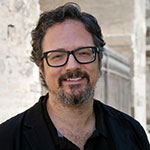
Rafael Lozano-Hemmer (MX/CA)
Rafael Lozano-Hemmer (b. 1967, Mexico City). Media artist collected by MoMA, Guggenheim, TATE, MUAC, MONA, ZKM, NGV and others. He was recently the subject of 9 solo exhibitions, including one at the Hirshhorn Museum in Washington DC, at the APMA Museum in Seoul, and a mid-career retrospective co-produced by the MAC in Montréal and SFMOMA. In 2019 his interactive installation “Border Tuner” connected people across the US-Mexico border using bridges of light controlled by the voices of participants on both sides.
www.lozano-hemmer.com
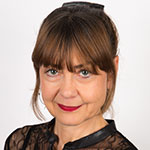
Christiane Paul (DE/US)
Christiane Paul is Chief Curator / Director of the Sheila C. Johnson Design Center and Professor in the School of Media Studies at The New School, as well as Adjunct Curator of Digital Art at the Whitney Museum of American Art. At the Whitney Museum she curated exhibitions including Programmed: Rules, Codes, and Choreographies in Art 1965 – 2018 (2018) and is responsible for artport, the museum’s portal to Internet art.

Mariano Sardón (AR)
Mariano Sardón born in Argentina. Artist. He studied Physics at the University of Buenos Aires. He’s professor and chair of the Electronic Art Degree at the Universidad Nacional de Tres de Febrero. Buenos Aires, Argentina. He obtained the ARCO/BEEP prize for Electronic Arts 2019 at ARCO gallery Fair Madrid and“Konex Prize in Visual Art Category 2012. Some exhibitions: Feria ARCO Madrid 2019, Pilar Serra Gallery. Artissima 2017 Artericambi Gallery, 57th Bienale di Venezia 2017. Pallazzo Fortuny 2017. Ars Electronica Berlin, 2017. Ars Electronica Linz 2017, 2016, 2013. Ruth Benzacar Gallery, 2019, 2016, 2012, 2004. 2014 Bryce Wolkowitz Gallery NY 1014, 2013, 2007. 11th Bienal de La Habana 2012. Fundación PROA, 2013 Akademie der Künste Berlin, 2010. Museo de Arte Moderno de Buenos Aires 2012, 2010, 2004. Fundación Telefónica Buenos Aires 2008 and Santiago de Chile 2011. Museo de Arte Latinoamericano de Buenos Aires (MALBA) 2003 y 2005. Among others.
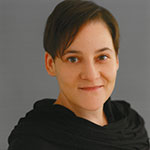
Dagmar Schink (AT)
Dagmar Schink studied at the University of Art and Design Linz and in Helsinki at the University of Art and Design (UIAH). After working at the OK Offenes Kulturhaus and the Crossing Europe Film Festival, she moved to the University of Art and Design Linz, where in 2016 she was entrusted with co-establishing the VALIE EXPORT Center Linz at the Tabakfabrik. In 2017 she was named managing director of the Center. She is also a member of the Linz City Culture Advisory Board, the jury for the Marianne.von.Willemer Prize for Digital Media, and the Linz UNESCO City of Media Arts Advisory Board.
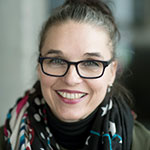
Manuela Naveau (AT)
Manuela Naveau, PhD., is an Austrian artist, researcher and curator of Ars Electronica Linz and together with the artistic and managing director Gerfried Stocker she developed Ars Electronica Export.
She is a professor at University of Art and Design Linz and was teaching at the Paris Lodron University in Salzburg and the Danube University Krems. Her research investigates working with networks, platforms and data in the epistemological context of an artistic-scientific research practice and at the interface of art, technology and society. Her book „Crowd and Art – Kunst und Partizipation im Internet“ (Crowd and Art – Art and Participation in the Internet) has been published in 2017 in transcript Verlag, Germany. The book is based on her dissertation, for which she received the Award of Excellence from the Austrian Ministry of Science, Research and Economy in 2016.
www.manuelanaveau.at – www.crowdandart.at


